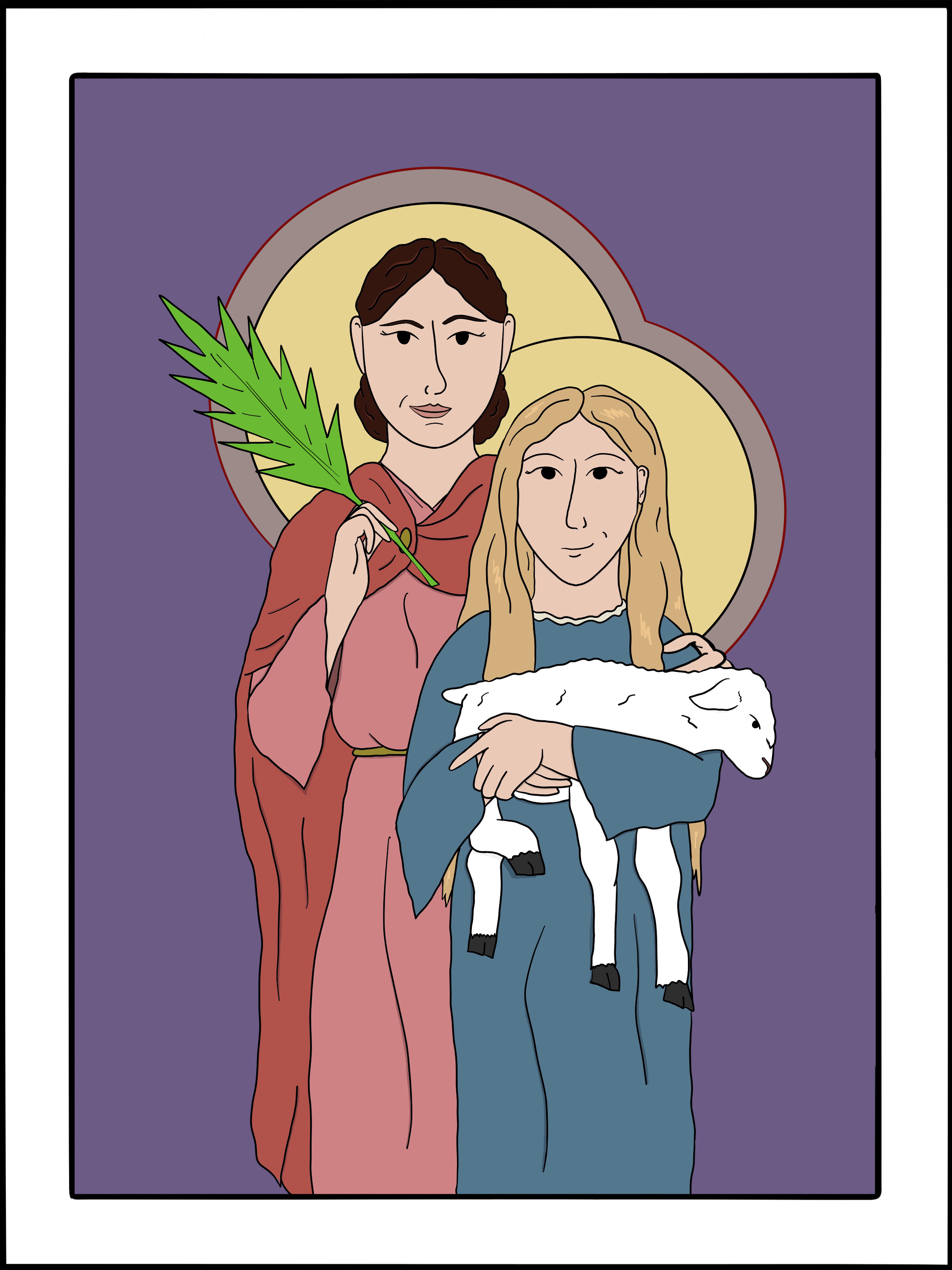
January 21
Agnes and Cecilia of Rome
Martyrs, 304 and 230
art by Rev. Kirsten Kohr of Uhrichsville, OhioAlmighty and everlasting God, who chooses those whom the world deems powerless to put the powerful to shame: grant us so to cherish the memory of your youthful martyrs Agnes and Cecilia, that we might share their pure and steadfast faith in you; through Jesus Christ our Lord, who lives and reigns with you and the Holy Spirit, one God for ever and ever. Amen.
Agnes and Cecilia are two of the most venerated early Christian martyrs and were both killed during persecutions in Rome.
As a young girl around twelve or thirteen years of age, Agnes was denounced as a Christian when she rejected propositions from men who wanted to marry her. She refused to change her mind or to sacrifice to the Roman gods, and so she was tortured and executed. The early fathers of the church praised her courage and chastity and drew upon parallels with her name, which means “pure” in Greek and “lamb” in Latin.
Pilgrims still visit Agnes’ tomb and the catacomb surrounding it, beneath the basilica of her name on the Via Nomentana in Rome that Pope Honorius I (625-638) built in her honor to replace an older shrine erected by the Emperor Constantine. On her feast day at the basilica, two lambs are blessed, whose wool is woven into a scarf called the pallium, with which the Pope invests archbishops. Pope Gregory the Great sent such a pallium in 601 to Augustine, the first Archbishop of Canterbury. A representation of the pallium appears on the coat of arms of Archbishops of Canterbury to this day.
Cecilia is the patron saint of singers, organ builders, musicians, and poets. According to fifth-century sources, Cecilia was of noble birth and was betrothed to a pagan named Valerian. Cecilia’s witness resulted in the conversion of both Valerian and his brother, Tiburtius. Because of their conversion, the brothers were martyred and, while Cecilia was burying them, she too was arrested. After several failed attempts to put her to death, she died from injuries sustained by the ordeal. The date of her martyrdom is generally believed to be 230.
Remembered for the passion with which she sang the praises of God, Cecilia is first depicted in Christian art as a martyr, but, since the fourteenth century, she has often been shown playing the organ, a theme picked up by Raphael in his famous altarpiece for San Giovanni in Monte, Bologna, painted around 1516. Her story has inspired centuries of artistic representations in paintings, sculptures, mosaics, and stained glass. Composers such as Handel, Purcell, Howells, and Britten have written choral works and mass settings in her honor. Many music schools, choral societies, and concert series bear her name.
Excerpted directly from “Lesser Feasts and Fasts 2022,” p. 50-51.
Lessons and Psalm Song of Songs 2:10-13
Psalm 45:11-16
Matthew 18:1-6
Preface of a Saint (3)

